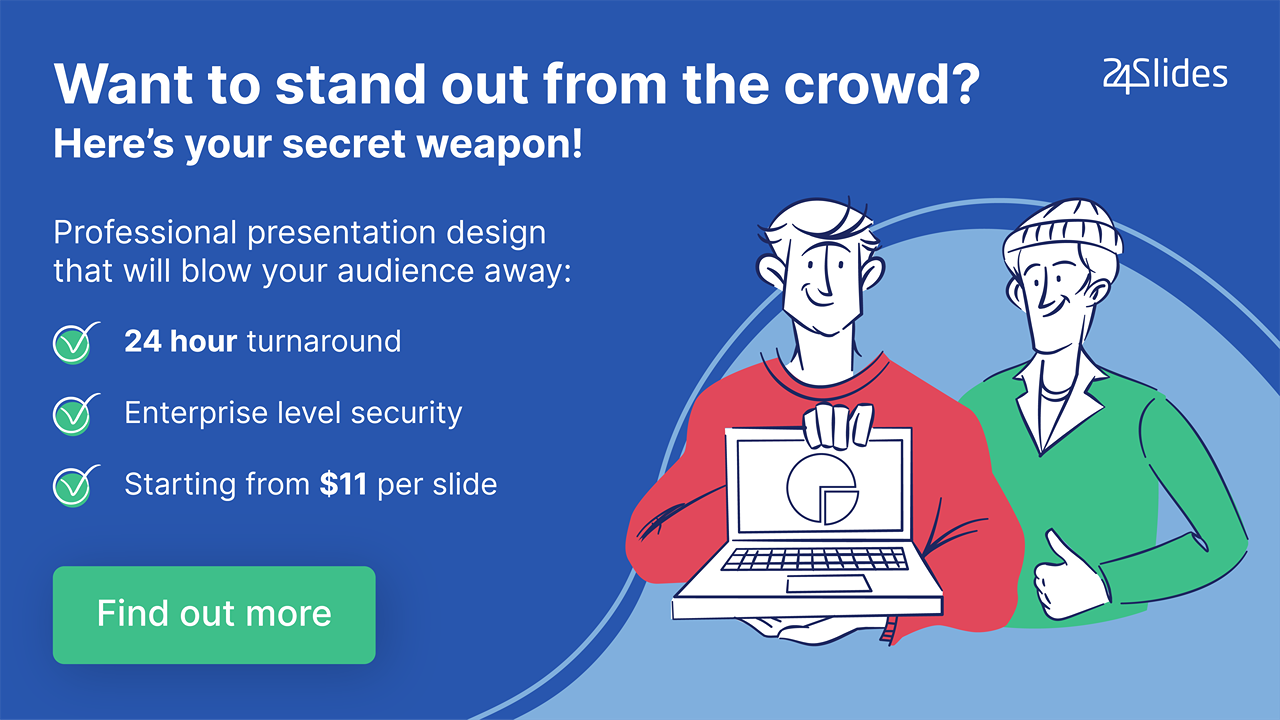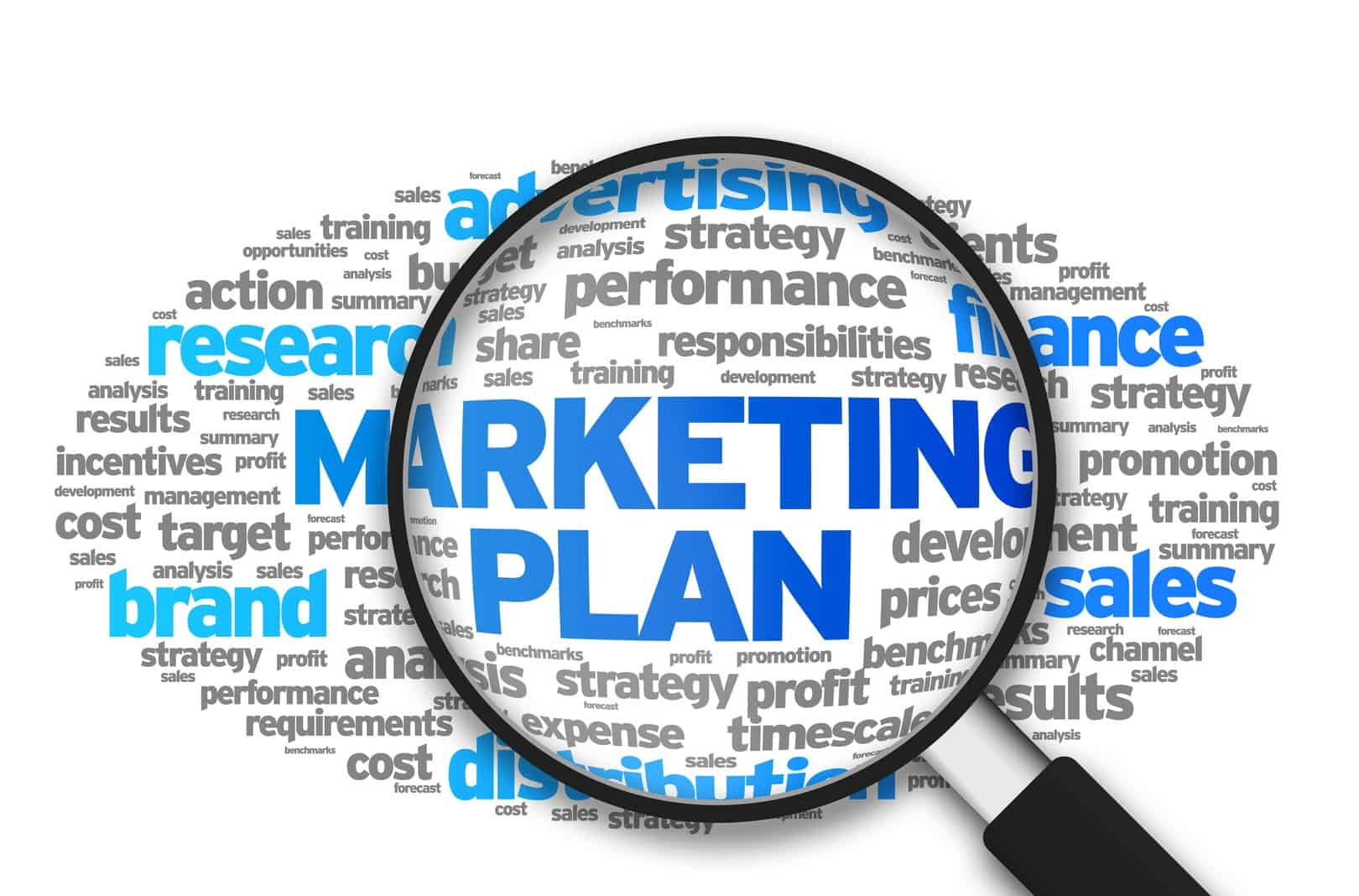How to Create the Perfect B2B Sales Presentation
Creating an excellent B2B sales presentation can be quite a task! In some ways, this kind of presentation is more demanding than business-to-customer presentations, as there is more in the line. Decision-makers in the business you’ll be targeting will have their company’s best interests in mind, not just their personal preferences. That’s why B2B presentations have to be strategic and focused on what you can bring to the table.
We know this is a crucial task for your business. That’s why today we’ll show you step-by-step how to create the perfect B2B sales presentation. And there’s more: We’ve interviewed our head of sales, Robert Juul Glaesel, to provide you with the BEST tips for successful presentations. So… let’s begin!

We’ll discuss:
- How to create a great sales presentation: First steps
- What should be included in a B2B sales presentation?
- Expert’s insights: How to create a GREAT sales presentation
- Design tips: What makes a good sales presentation?
- How to create your most effective sales presentation yet (and how 24Slides can help out)
How to create a great sales presentation: First steps
Remember, creating a sales presentation requires some previous preparation. So, before starting the actual PowerPoint, you need to consider some aspects. Let’s take a look at each one of them.
#1. Get to know your audience
Before you start creating a sales presentation, take some time to research your potential customer. This might seem like an obvious one, but you might be surprised at how little people actually care about this point! According to Forrester’s Buyer Insight study, only 13% of executive buyers believe that the salespeople understand their company’s issues.
As Robert says:
“To create a great sales presentation, you need to understand who you’re speaking with, their industry, and their needs. Make sure you ask them questions to deeply understand the situation before you start selling.”
Companies don’t care about your services or product if they don’t help make their business better and more efficient. Researching and focusing on the customer’s pain points is crucial for a good B2B sales presentation. Only by knowing exactly what they are lacking you’ll be able to present your product as a problem-solver!
So, before you start, make sure you have the answer to these questions:
- What is their brand’s identity?
- What are their brand values?
- What are their main pain points?
- Who are their customers?
- What solution or product are they currently using?
#2. Define your key value proposition
Robert reminds us that the KEY to any presentation is having the answer to one question:
“How would their business be better once they have purchased your product/service?”
In his words, sales is about matching a need to a solution. And one of the many mistakes that are made on sales teams is that people only talk about the solution. They share all their product's benefits and features but completely forget about the client. As he says:
“Many salespeople will just talk about all their product’s awesomeness, but it's all about the solution. The question that all customers sit back with is: “What will that do for me? What will that do for my company?”
Don’t get me wrong, you definitely should mention those, but there is a time and place for that, and they shouldn’t be central to your presentation. Try shifting your mindset, and instead of talking about how incredible your product is, try explaining how it could do wonders for them.
Robert tells us how he does this when he presents 24Slides (professional presentation design services):
“Usually, when I do sales presentations, I don't really focus on the platform because I don't talk about presentations necessarily; that is more of a byproduct. I talk about people’s productivity, about the problems in a company if you don't have brand consistency. And then I verify if that is something that they see.”
#3. Establish your main differentiator
In B2B sales presentations, it is critical to focus on differential value. Ask yourself, what does my company provide that the others don’t? What makes me better than my competitors? Even more importantly, what makes my services valuable for people who might be satisfied by the status quo?
In many cases, you might not even be competing with a specific service or product but with the way your clients are “used to do things.” It’s your job to help them see beyond the routine and highlight how it’s worth changing.
What should be included in a B2B sales presentation?
Now that we’ve seen everything that should be done previously, let’s begin considering what a B2B Sales presentation should actually include.
Introduce your prospect's pain points
After briefly introducing yourself, start pointing out some of the pain points you’ve identified. You can talk about a shift in the industry, an undeniable transition, and its impact on their business. Make sure to include data on this impact; you could talk about the money or time they are wasting or even statistics on how people are affected by the problem.
Check out this example from Pocus:

Show your product as the solution
Once you’ve presented the problem (and the prospect has recognized it), present your product as the logical solution. In Robert’s words:
"You essentially make them realize that they have this pain, and they start feeling the desire to solve this issue, and then... voila! You show them how to solve it by tying your solution to their needs and concerns."
A successful sales presentation portrays your product as a tool to help prospects achieve their goals. It’s important to note that this section isn’t about listing every feature and benefit of your product or showing how it’s used. Instead, it’s about positioning your product as a valuable resource on your prospect’s journey.
Here’s an example from Pocus:
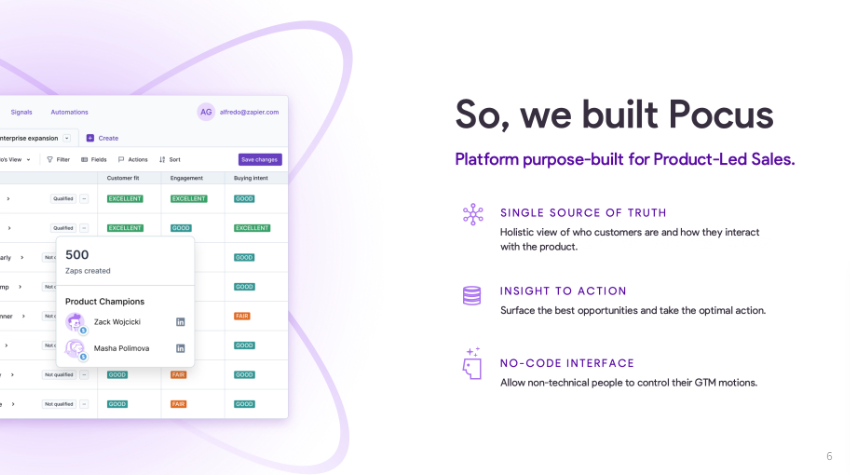
Back it up with data
Now that you have presented your product as a solution that will benefit the prospect’s business, back it up with evidence. You could present a case study showing how your products solved similar challenges for a company. Or you could show statistics of studies you’ve done about your product’s impact. It could look like this:
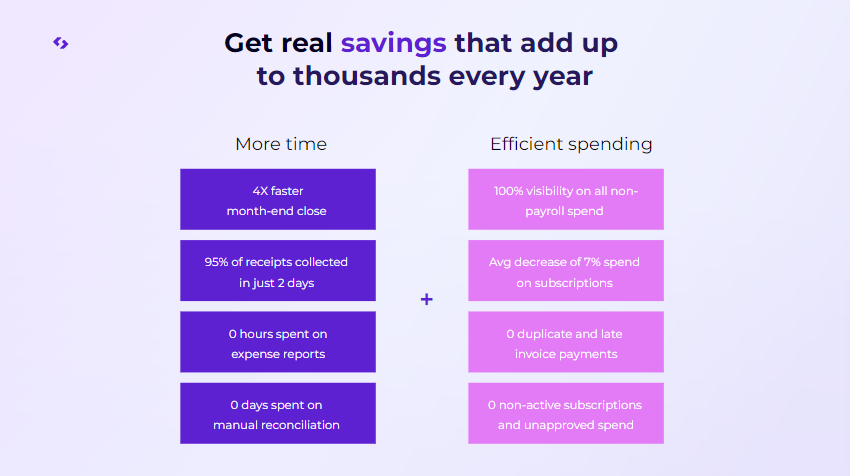
Showcase your platform's features and benefits
Now’s the time to show all of your product’s features and benefits. Talk about all the fantastic things that add value to it: things they’ll be able to do, data they will get access to, and more. Additionally, consider providing a visual demonstration to give them a glimpse of your product’s appearance and functionality. Take a look at how Spendesk is doing it:
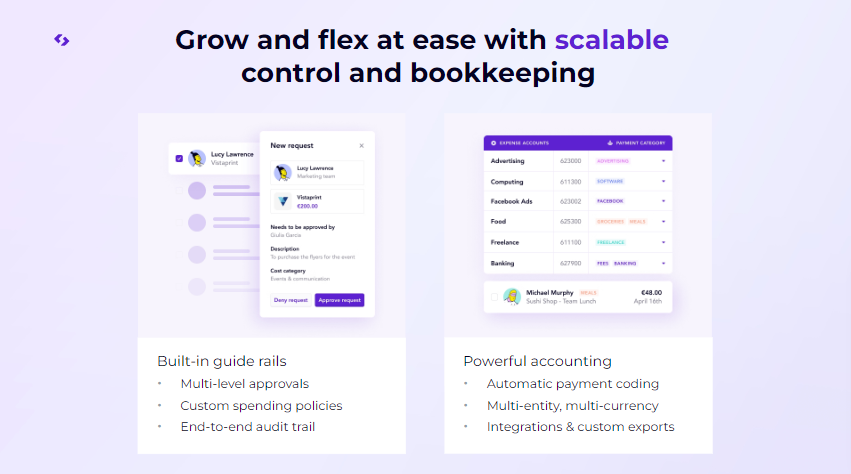
Share some of your major clients & case studies
Remember one of the most essential marketing aspects: social proof. So, you must include some comments about what your actual customers are saying. You can also have a slide showing some of your best customers. Check out the comments that Spendesk included:
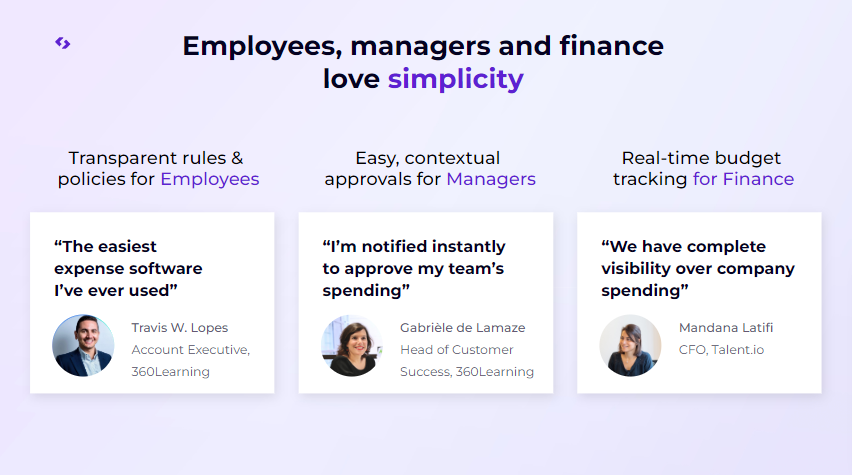
Check out 10+ Sales PowerPoint Presentation Examples To Get Inspired!
Experts insights: How to create a GREAT sales presentation
#1. Customize your presentations
Especially if you’re a B2B company that provides to different industries, having presentations that target the specific issues and characteristics is a must! Generic, one-for-all presentations will not do. Tailoring your message to the industry and your potential client’s problems will make your sales presentation much more incisive.
As difficult as this might be, sales representatives should always be ready to engage with potential customers! To help them be ready on-demand, having easily customizable presentations can be a huge aid. Using master templates can help you ensure all your presentations are on-brand while still customer-specific.
#2. Tell a story
Storytelling is one of the most effective ways to create an emotional bond with your audience. It has been proven that stories are even more memorable than cold hard data! Many people confuse storytelling with just adding anecdotes into your presentation. While this might be nice every once in a while, it’s not what we’re talking about!
It means going beyond theoretical and abstract examples and giving them a face and a name your audience can empathize with. It’ll help you show the human side of your business and connect on a deeper level with your audience. It’ll make your presentation more memorable, and it’ll most likely leave your audience thinking about you long after it’s over.
You might also be interested in 7 Essential Storytelling Techniques for Your Business Presentation
#3. Engage with your audience
Just like the last one, this is a tip concerning creating emotional bonds with your audience. Presenting as if you’re speaking to a wall will not get you any sales! Engaging with your audience is a crucial aspect of business presentations. This will not only make your presentation more entertaining, but it’ll also give your audience the impression that their needs and concerns are really being taken into account.
Listening to your audience is vital not only to make them feel more comfortable but to learn more about them too! Learning to listen is a great skill to have for any salesperson. This way, you’ll be able to know more about their concerns and pain points and tailor your presentation accordingly.
#4. Create an outstanding design
Just like you would care about your personal appearance when giving a B2B presentation, your presentation looks are also important! First impressions do matter, and your presentation design can say a lot about your product, your company, and your overall reliability.
A good presentation design that reflects your brand and values can help you convey more than you think! It can make you look more professional, more trustworthy, more creative… You can show what your brand is all about more memorably and effectively than just talking about it. Professional presentation design is a fantastic option to have in your toolbox to make sure your presentation conveys your message and your brand values perfectly.
Design tips: What makes a good sales presentation?
There are some tips to keep in mind when designing a sales presentation:
- Your PowerPoint presentation is a visual aid, not a script. It’s meant to complement the speaker, not compete with it. Your slides should help you illustrate and give context to what you’re talking out loud. Focus on the visual aspect of your slides and avoid using huge chunks of text that will be distracting and just plain boring for the audience.
- Quality is ALWAYS more important than quantity. You may feel tempted to include all the details of your product or service: every image, video, chart, etc. Remember, the sales presentation is not the place for this. It is a brief meeting where the idea is to connect your product with the customer's needs, so keep in mind it is about them.
- This is an opportunity to show them who you are. This is one of your most crucial presentations, so it should definitely have your brand all over it. There should be consistency between what they see on your website, social media, etc., and your sales presentation. Branding your B2B presentation also shows you care about your image and pay close attention to detail, especially in these key meetings.
How to create your most effective sales presentation yet: and how we can help out
Creating an excellent sales presentation is a big deal. So, if you want a truly outstanding presentation completely customized to your needs and brand, then you must try 24Slides professional presentation design service. Our designers will take your slides from ‘okay’ to ‘incredible’ in just 24 hours!
Here's how it works:
- Create an outline: Include all the content you want in your presentation.
- Have your style guide ready: Include any elements you want, such as your prospect's logo, images, or specific image features.
- Provide clear instructions: Share your vision and what you want your presentation to communicate.
- Send it through our platform: You can also request proofreading if needed.
- Receive it in less than 24 hours!
Unlock the power of a professionally designed presentation with 24Slides and make your sales pitch truly shine.
